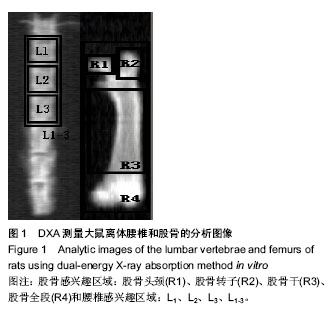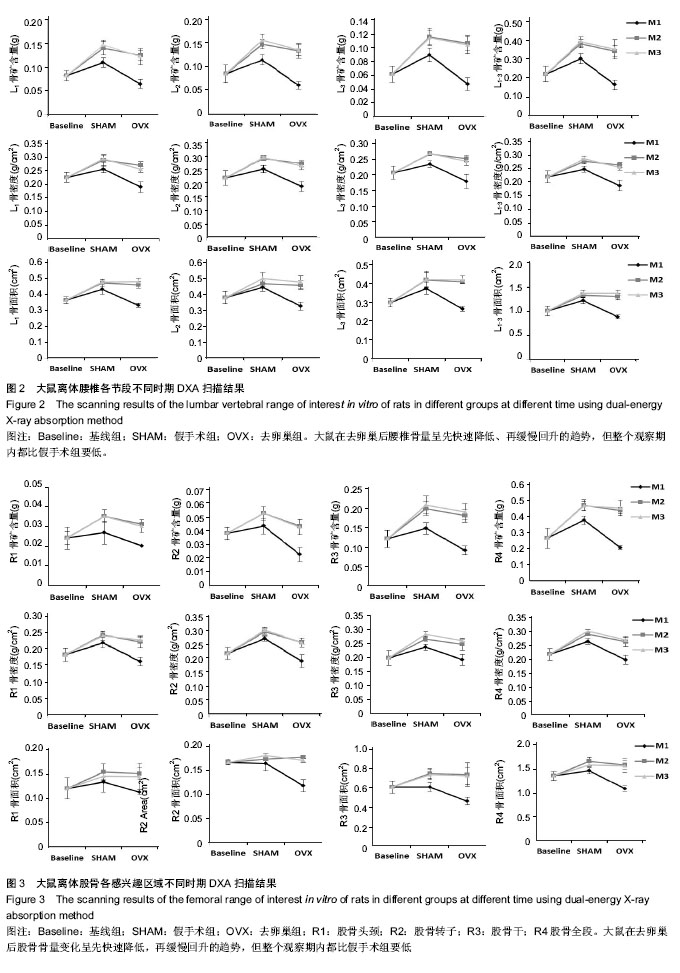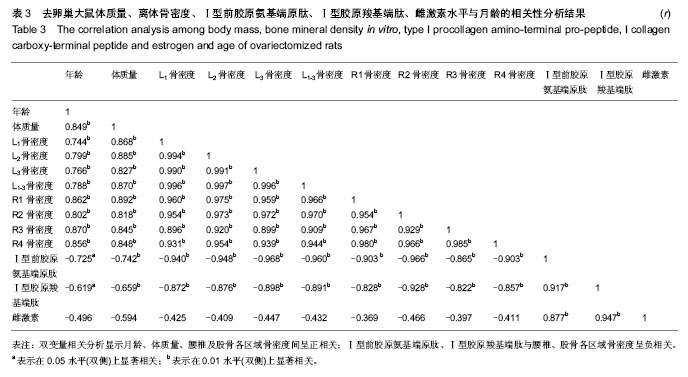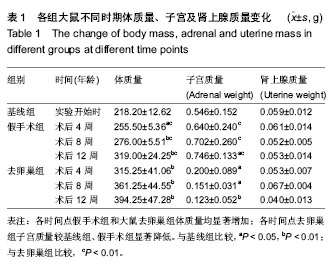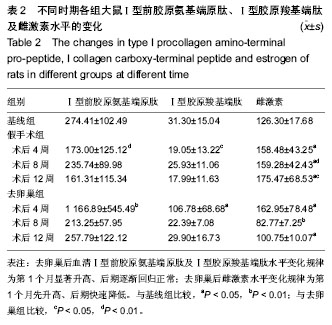中国组织工程研究 ›› 2015, Vol. 19 ›› Issue (2): 170-176.doi: 10.3969/j.issn.2095-4344.2015.02.002
• 骨组织构建 bone tissue construction • 上一篇 下一篇
去卵巢大鼠不同时期骨量、骨转换指标、雌激素水平的变化规律及相关性
沈耿杨1,任 辉1,江晓兵2,梁 德2,杨志东2,唐晶晶1,崔健超1,林顺鑫1,庄 洪2,张顺聪2,姚珍松2
- 1广州中医药大学,广东省广州市 510405;2广州中医药大学第一附属医院,广东省广州市 510405
Change rules and correlation between bone mass, bone turnover markers and estrogen levels in different periods of ovariectomized rats
Shen Geng-yang1, Ren Hui1, Jiang Xiao-bing2, Liang De2, Yang Zhi-dong2, Tang Jing-jing1, Cui Jian-chao1, Lin Shun-xin1, Zhuang Hong2, Zhang Shun-cong2, Yao Zhen-song2
- 1Guangzhou University of Chinese Medicine, Guangzhou 510405, Guangdong Province, China; 2the First Affiliated Hospital of Guangzhou University of Chinese Medicine, Guangzhou 510405, Guangdong Province, China
摘要:
背景:目前对去卵巢大鼠的研究较多,而对不同时间点大鼠骨量、骨转换指标、雌激素水平的变化规律及各因素的相关性研究报道较少。 目的:分析去卵巢大鼠不同时期骨量、骨转换指标、雌激素水平的变化规律并探讨其相关性。 方法:34只3月龄雌性SD大鼠,随机分为基线组、假手术组和去卵巢组。实验开始先将基线组处死,假手术组及去卵巢组于术后第4,8,12周分次处死。双能X射线吸收法(DXA)测定L1-3及股骨不同分区(头颈部R1区、转子部R2区、股骨干R3区、股骨整体R4区)的骨矿含量、骨密度、骨面积;酶联免疫吸附法(ELISA)检测血清Ⅰ型前胶原氨基端原肽、Ⅰ型胶原羧基端肽及雌激素水平。对大鼠体质量、离体骨密度、Ⅰ型前胶原氨基端原肽、Ⅰ型胶原羧基端肽、雌激素水平、月龄间的相关性进行分析。 结果与结论:①去卵巢后4周去卵巢组离体腰椎及股骨骨矿含量、骨密度均较基线组、假手术组明显降低(P < 0.05),第8,12周时均显著改善(P < 0.05),腰椎、股骨各区域骨量丢失幅度最大的为L1及股骨转子区。 ②去卵巢后4周去卵巢组血清Ⅰ型前胶原氨基端原肽、Ⅰ型胶原羧基端肽水平较基线组、假手术组均显著升高(P < 0.05),第8,12周差异无显著性意义。③去卵巢组第8,12周血清雌激素较假手术组及基线组明显降低(P < 0.01,P < 0.05)。④月龄与大鼠体质量、腰椎及股骨骨密度呈正相关,Ⅰ型前胶原氨基端原肽、Ⅰ型胶原羧基端肽与腰椎及股骨骨密度呈负相关(P < 0.01)。提示去卵巢后大鼠腰椎、股骨骨量变化呈先快速降低、再缓慢回升的趋势,其中L1及股骨转子部受影响最大;骨转换指标在去卵巢后显著加快、后期逐渐回归正常;雌激素水平变化规律为第1个月先升高、后期快速降低;体质量、骨转换指标及雌激素水平与骨量密切相关。
中图分类号:
